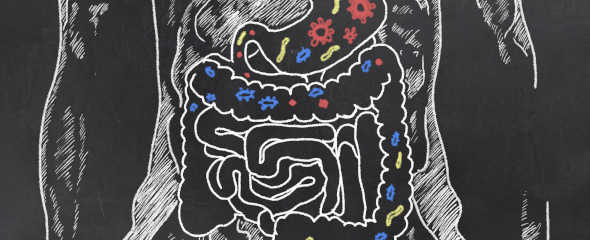Essentially, we are never alone – because they are always with us: billions of microorganisms – such as bacteria, viruses or fungi – inhabit our bodies. They live on our skin, in our mouths, noses or intestines – depending on the preferences of our tiny cohabitants and the demands they make of their environment. “For the most part, the microbiota consists of bacteria that are well-disposed and extremely useful to us,” says Prof. Alice McHardy. “In the gut, for example, they influence how well we digest certain foods and absorb nutrients. On the skin, they form an important part of our natural protective skin barrier.” McHardy heads the HZI Department of Computational Biology of Infection Research, which is housed at the Braunschweig Integrated Centre of Systems Biology BRICS, and also coordinates the bioinformatics of the German Center for Infection Research (DZIF).
It is well known that the microbial community is important for our health and even essential to our survival. If it becomes unbalanced due to external or internal influences, pathogens can gain the upper hand and damage our health. However, there are still many unanswered questions about the human microbiota: What does it exactly consist of? What species are particularly abundant in the various parts of the body? To what extent are they exposed to attacks by viruses? How does the microbial community react to disturbances, how can it be brought back into balance? And where are possible starting points for medical therapies?
Using data science to gain new knowledge about the human microbiome
To come a step closer to answering these and many other questions, McHardy and her HZI team collaborated with researchers at the Harvard School of Public Health to generate an extensive data resource for characterising the human microbiome – the genetic information of the microbial community living on and in us. The study was based on data from the Human Microbiome Project (HMP1-II). For this purpose, healthy study participants had samples of their microbiota taken from different parts of their bodies, and the DNA they contained was sequenced. “We analysed this sequence data from over 2000 samples for specific DNA segments that are particularly import for characterising the microbiome and could also represent possible starting points for medical therapies in the future,” says Philipp Münch, a doctoral student in the McHardy work group and lead author of the study.
In particular, the researchers searched for DNA segments known as CRISPR or spacers. The abbreviation CRISPR stands for “clustered regularly interspaced short palindromic repeats”. These short DNA fragments occur in the genome of bacteria. They are named after their regular pattern of repeating and mirror-image sequences and can be quickly and reliably detected in sequence analyses due to their concise structure. Between two such CRISPR sequences, so-called spacers are found. These are DNA segments that provide evidence of previous viral attacks – because bacteria can also be attacked by viruses. The more often a bacterium has survived such an attack, the more CRISPR spacer regions it carries in its DNA. They form the core of the bacterial immune system, detecting foreign DNA that viruses introduce into bacterial cells in order to multiply within them. Each spacer region is tailored to a very specific virus with which the bacterium has already come into contact. This enables it to detect and disable attackers of the same virus type quickly when they attack again.
Extensive data resource: around three million new CRISPR sequences
“As part of our study, we have now been able to identify more than 2.9 million new sequences,” says McHardy. “This is really enormous – it is more than ten times what has been saved in the CRISPR database of all microbial genomes to date.” The researchers have compared their extensive database of CRISPR and spacer sequences with data from various genome databases to determine what already known bacterial species might be cavorting around in the microbiota, or whether they are subject to an especially large number of viral attacks in their particular location. “We have already been able to identify several known bacterial species with high CRISPR spacer load, such as a Fusobacterium found in the oral cavity or Prevotella, which is a bacterial genus that colonizes the intestine,” says Münch. “And with respect to the CRISPR system of the microbiome, the bacterial community in the oral cavity seems to be particularly well-equipped against virus attacks. Here we found a much higher number of CRISPR spacer regions than in the gut microbiome, for example.” The research team believes that the extensive data resource of the present study will allow many more questions related to the human microbiota, its microbiome and the interactions between bacteria and viruses to be answered in the future, which will further advance basic as well as applied research.
Original publication
Philipp C. Münch, Eric A. Franzosa, Bärbel Stecher, Alice C.McHardy, Curtis Huttenhower. Identification of Natural CRISPR Systems and Targets in the Human Microbiome. Cell Host & Microbe, 2020. DOI: 10.1016/j.chom.2020.10.010
Author: Nicole Silbermann

